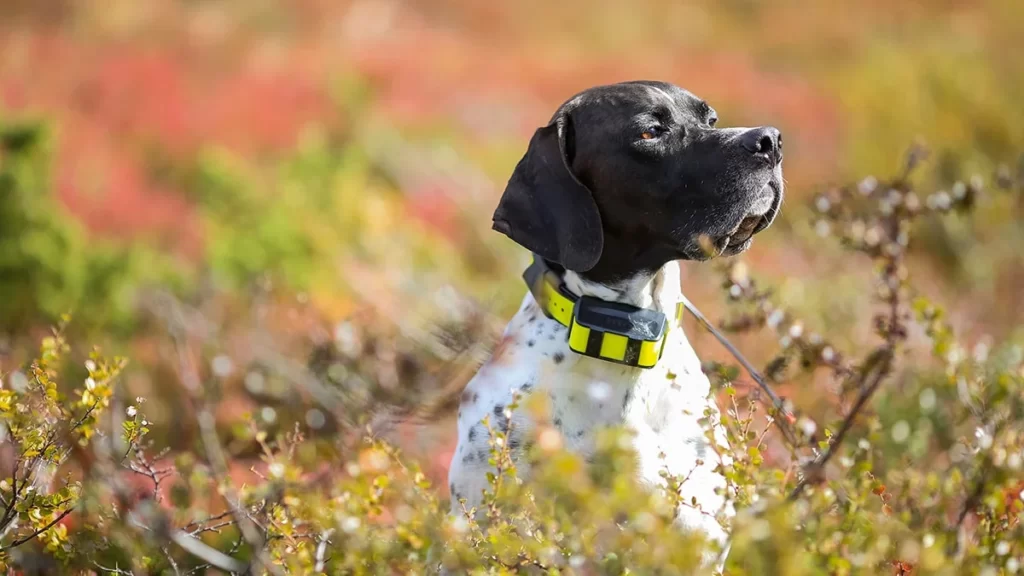As dog owners, it is essential to have a deep understanding of our furry companions’ behavior. Dogs communicate primarily through nonverbal cues, and deciphering these signals is key to building a strong and harmonious relationship with them.
By observing their body language, vocalizations, and behavioral patterns, we can gain valuable insights into their emotional states, needs, and desires. In this guide, we will delve into the world of dog behavior, exploring common signs and what they mean.
Whether you’re a new dog owner or seeking to deepen your understanding, this article will empower you to communicate effectively with your canine companion and nurture a bond based on trust, empathy, and mutual understanding.
Table of Contents
- 1 11+ Dog Common Signs and What They Mean
- 1.1 Tail Wagging: Unveiling the Secrets
- 1.2 Ear Language: Listening Beyond Words
- 1.3 Pawing: A Multifaceted Gesture
- 1.4 Body Language: The Silent Conversation
- 1.5 Barking: Vocalizing Emotions
- 1.6 Aggression: Unraveling the Triggers
- 1.7 Separation Anxiety: Soothing Their Fears
- 1.8 Tail Chasing: A Playful or Worrisome Behavior
- 1.9 Licking and Chewing: Seeking Comfort or a Sign of Concern
- 1.10 Socialization and Pack Behavior: Unlocking the Canine Mind
- 1.11 Fear and Phobias: Providing a Safe Haven
- 1.12 Health and Behavior: The Interconnection
- 2 Frequently Asked Questions
- 3 Conclusion
11+ Dog Common Signs and What They Mean
Discover the common signs exhibited by dogs and unravel their meanings, deepening your bond with your furry companion.
Tail Wagging: Unveiling the Secrets
A dog’s wagging tail is often seen as a universal sign of happiness. However, the true meaning behind tail wagging is more nuanced than meets the eye. The position and speed of the wag can provide valuable insights into a dog’s emotional state. A slow and gentle wag may indicate contentment, while a rapid wag with a high tail suggests excitement or anticipation. Conversely, a tucked tail signifies fear or submission. By closely observing their tail, you can gauge your dog’s current disposition.
Ear Language: Listening Beyond Words
Dogs rely heavily on their ears to communicate, and understanding their ear language can reveal important messages. Perked ears often signify attentiveness or curiosity, indicating that your furry friend is interested in something happening in their environment. On the other hand, flattened ears may indicate fear or anxiety. If your dog’s ears are positioned back, it could signal submission or discomfort. By observing their ears, you can gain valuable insights into their emotional state.
Pawing: A Multifaceted Gesture
Pawing is a behavior that can have various meanings depending on the context. When your dog gently paws at you, it is often a sign of affection or a request for attention. They may be seeking interaction or simply expressing their desire to be close to you. However, if the pawing becomes more forceful or persistent, it could indicate anxiety or a need for something, such as food, water, or a bathroom break. Paying attention to the intensity and frequency of pawing can help you respond appropriately to your dog’s needs.
Body Language: The Silent Conversation
A dog’s body language provides a treasure trove of information about their emotional state. By carefully observing their posture, facial expressions, and overall demeanor, you can decipher their intentions and feelings. A relaxed body with a loose wagging tail indicates a happy and confident dog. Conversely, a tense body, raised hackles, or a rigid tail suggests aggression or fear. Understanding these subtle cues can help you create a safe and comfortable environment for your furry companion.
Barking: Vocalizing Emotions
Barking is a fundamental way for dogs to communicate with their human counterparts. However, it is essential to discern the underlying message behind their barks. A rapid and high-pitched bark might indicate excitement or playfulness, while a deep, low growl signals aggression or perceived threat. Excessive barking could stem from boredom, anxiety, or a desire for attention. By paying attention to the tone, duration, and accompanying body language, you can better interpret your dog’s vocalizations.
Aggression: Unraveling the Triggers
While aggression is an undesirable behavior, it is crucial to understand its causes and how to address them effectively. Aggression in dogs can stem from fear, territoriality, possessiveness, or even pain. Recognizing the warning signs, such as a stiff body, direct eye contact, or bared teeth, can help you diffuse potential confrontations. Seeking the guidance of a professional dog behaviorist is highly recommended when dealing with aggression to ensure the safety and well-being of both your pet and others.
Separation Anxiety: Soothing Their Fears
Many dogs experience separation anxiety when left alone, which can manifest in destructive behavior, excessive barking, or even self-harm. Recognizing the signs of separation anxiety is crucial to providing the necessary support for your furry friend. Common indicators include pacing, excessive salivation, and attempts to escape. To alleviate their distress, gradually acclimate your dog to being alone, provide them with engaging toys, and establish a consistent routine. Consulting with a professional dog trainer can offer valuable insights and guidance in managing separation anxiety effectively.
Tail Chasing: A Playful or Worrisome Behavior
Tail chasing is a behavior that can be both amusing and concerning. While it is often associated with playfulness, excessive or compulsive tail chasing may indicate underlying issues, such as boredom, anxiety, or even certain medical conditions. If your dog becomes fixated on their tail, loses interest in other activities, or displays signs of frustration, it is advisable to consult with a veterinarian or animal behaviorist. They can help determine the cause and provide appropriate strategies to redirect this behavior into more constructive activities.
Licking and Chewing: Seeking Comfort or a Sign of Concern
Dogs frequently engage in licking and chewing behaviors, but the reasons behind them can vary. Licking is a natural grooming instinct, and it can also serve as a self-soothing mechanism. However, excessive licking, particularly focused on a specific area, may indicate discomfort, allergies, or even skin irritation. Similarly, excessive chewing can be a sign of anxiety, teething in puppies, or a lack of mental stimulation. Ensuring your dog has appropriate chew toys, providing regular exercise, and addressing any underlying medical issues can help curb these behaviors.
Socialization and Pack Behavior: Unlocking the Canine Mind
Dogs are social animals with a natural inclination toward pack behavior. Understanding their socialization needs is crucial for their overall well-being. Early socialization during puppyhood exposes them to various stimuli, people, and animals, helping them develop into confident and well-adjusted adults. Regular socialization throughout their lives ensures they remain comfortable and friendly in various environments. Organized puppy classes, playdates with other dogs, and controlled introductions to new experiences can all contribute to a well-socialized and happy canine companion.
Fear and Phobias: Providing a Safe Haven
Just like humans, dogs can develop fears and phobias. Common triggers include loud noises (thunderstorms or fireworks), unfamiliar environments, or traumatic experiences. Recognizing signs of fear, such as trembling, hiding, excessive panting, or attempts to escape, is crucial in providing support and reassurance. Creating a safe space within your home, using positive reinforcement techniques, and desensitization exercises can help alleviate their fears. In severe cases, consulting with a professional dog behaviorist who specializes in fear and phobias can provide tailored strategies to help your dog overcome their anxieties.
Health and Behavior: The Interconnection
It is important to note that changes in behavior can sometimes be indicative of underlying health issues. If your dog’s behavior suddenly changes or they exhibit unusual signs, it is essential to consult with a veterinarian. Pain, illness, or discomfort can manifest in altered behavior, including aggression, withdrawal, or changes in appetite. By addressing potential health concerns promptly, you can ensure your dog’s well-being and prevent further complications.
Frequently Asked Questions
Q) Why does my dog wag its tail?
Tail wagging is often a sign of happiness and excitement in dogs. However, it can also indicate other emotions such as fear or agitation. The context and other body language cues can help determine the exact meaning.
Q) What does it mean when my dog barks?
Dogs bark for various reasons, including alerting you to something, expressing excitement, seeking attention, or displaying aggression. Understanding the context and accompanying body language can provide insight into the specific message.
Q) Why does my dog lick me?
Licking is a common behavior in dogs and can have different meanings. It may indicate affection, submission, or a way of exploring and gathering information about their surroundings. It can also be a sign of anxiety or stress.
Q) What does it mean when my dog growls?
Growling is a warning signal that dogs use to communicate discomfort, fear, or aggression. It’s important to respect their boundaries and investigate the underlying cause of the growling behavior.
Q) Why does my dog tilt its head?
Dogs often tilt their heads in response to a sound or when trying to better understand something. This adorable behavior allows them to adjust their ears and gather more information about the source of the sound or the object of interest.
Conclusion
Understanding common signs displayed by dogs is crucial for effective communication and building a strong bond with our four-legged companions. By recognizing these signs, we can better interpret their needs and emotions.
Tail wagging, for instance, can convey joy or excitement, while a tucked tail might indicate fear or submission. Dilated pupils may suggest stress or anxiety, while relaxed body language often signifies comfort and relaxation.
It is essential to pay attention to vocalizations, such as barking or growling, as they can convey different messages depending on the context. By learning to decipher these signs, we can ensure the well-being and happiness of our beloved dogs.




